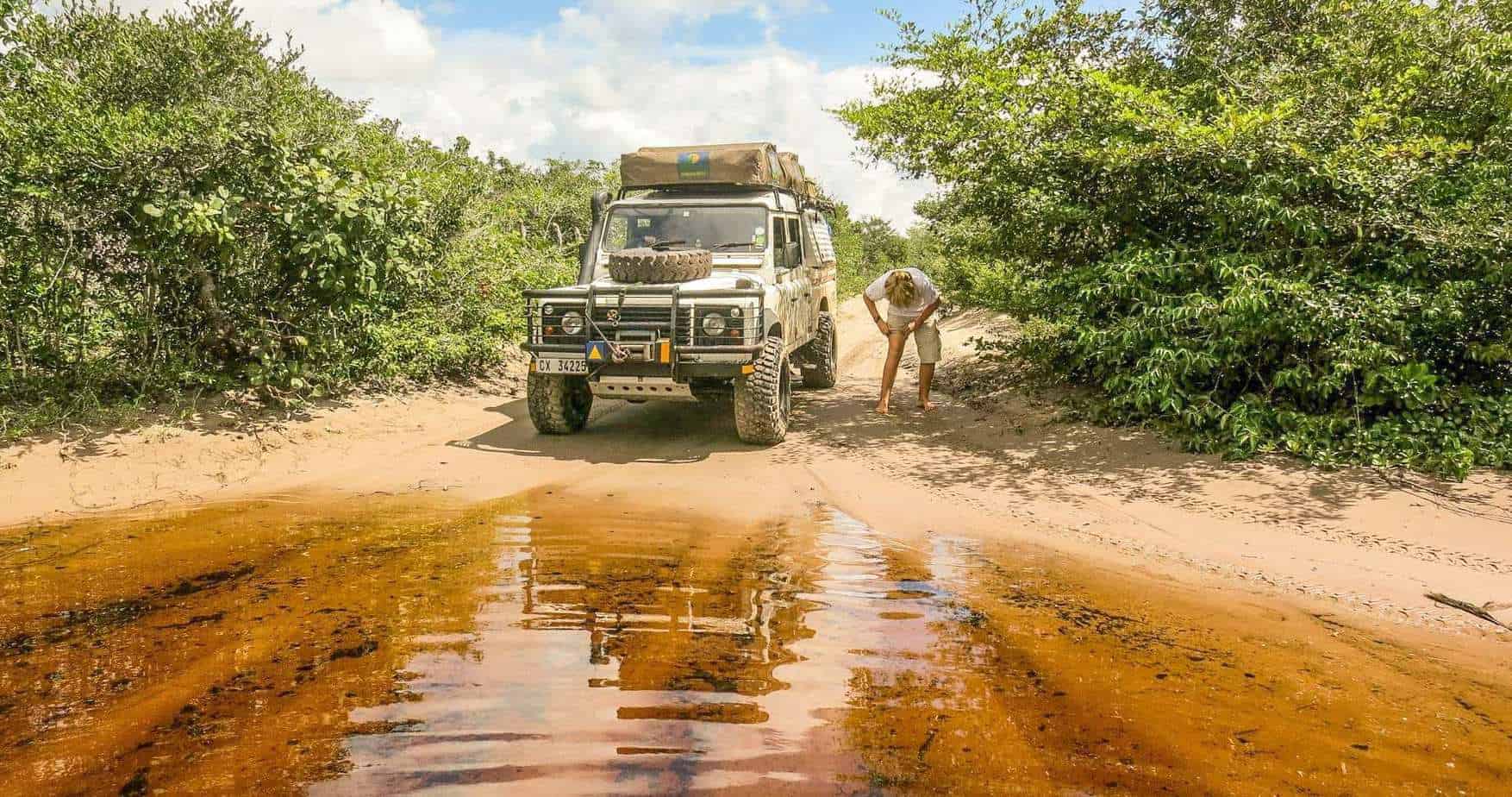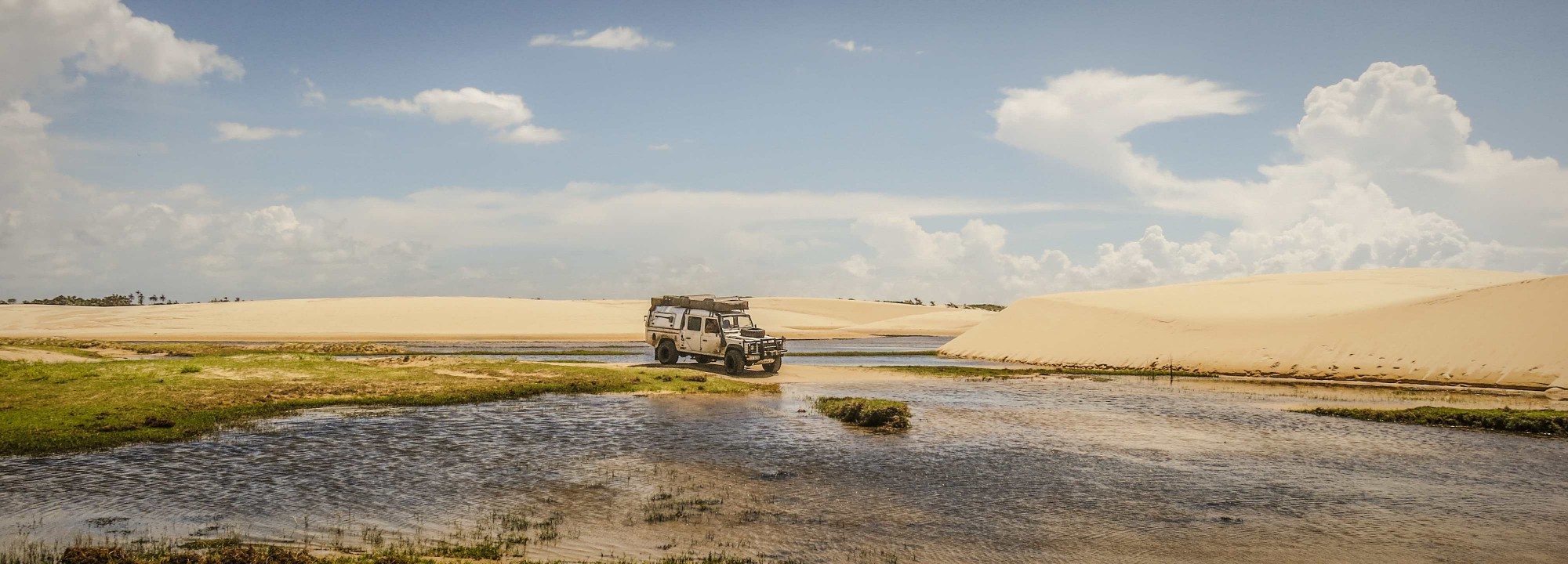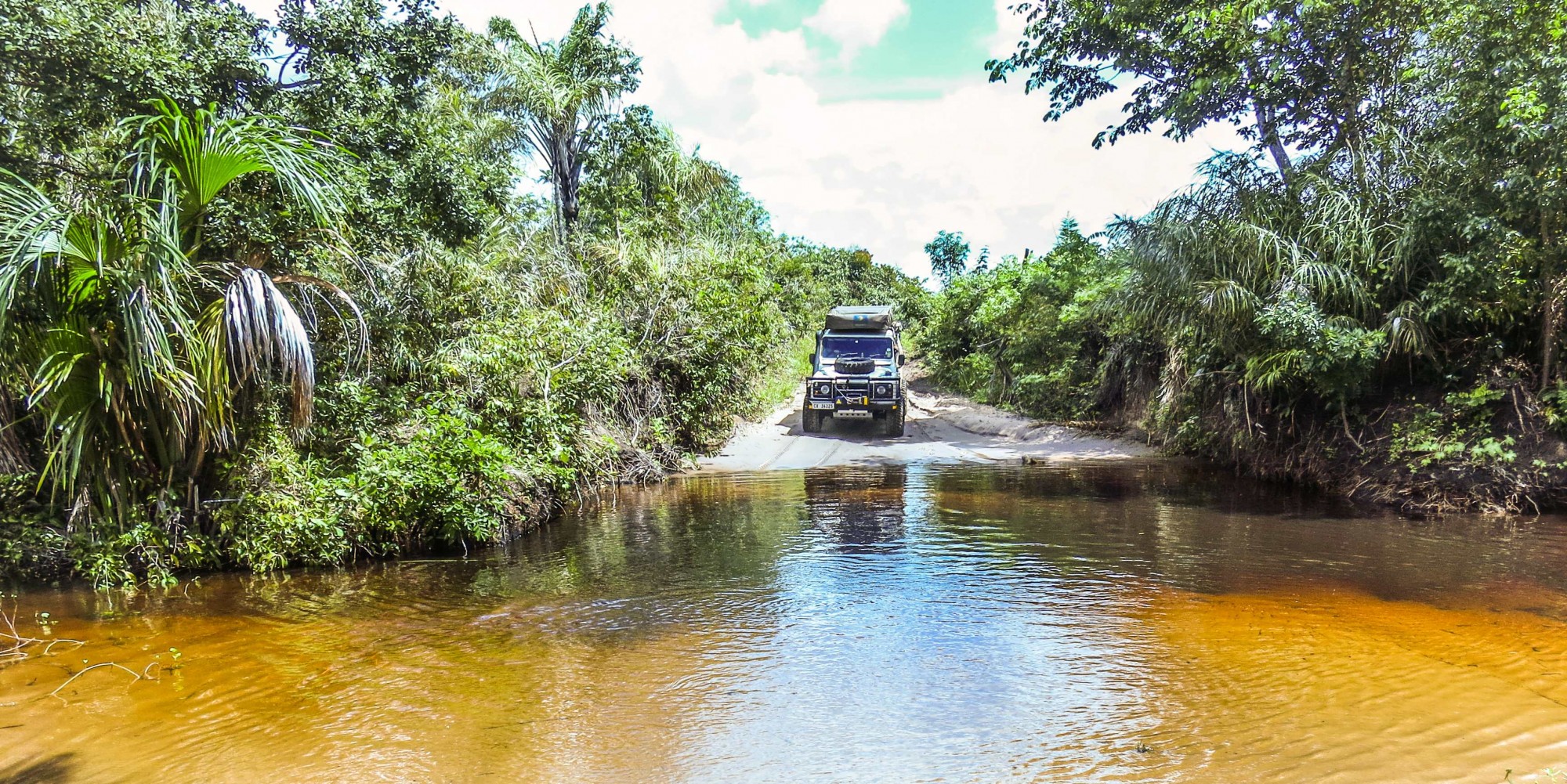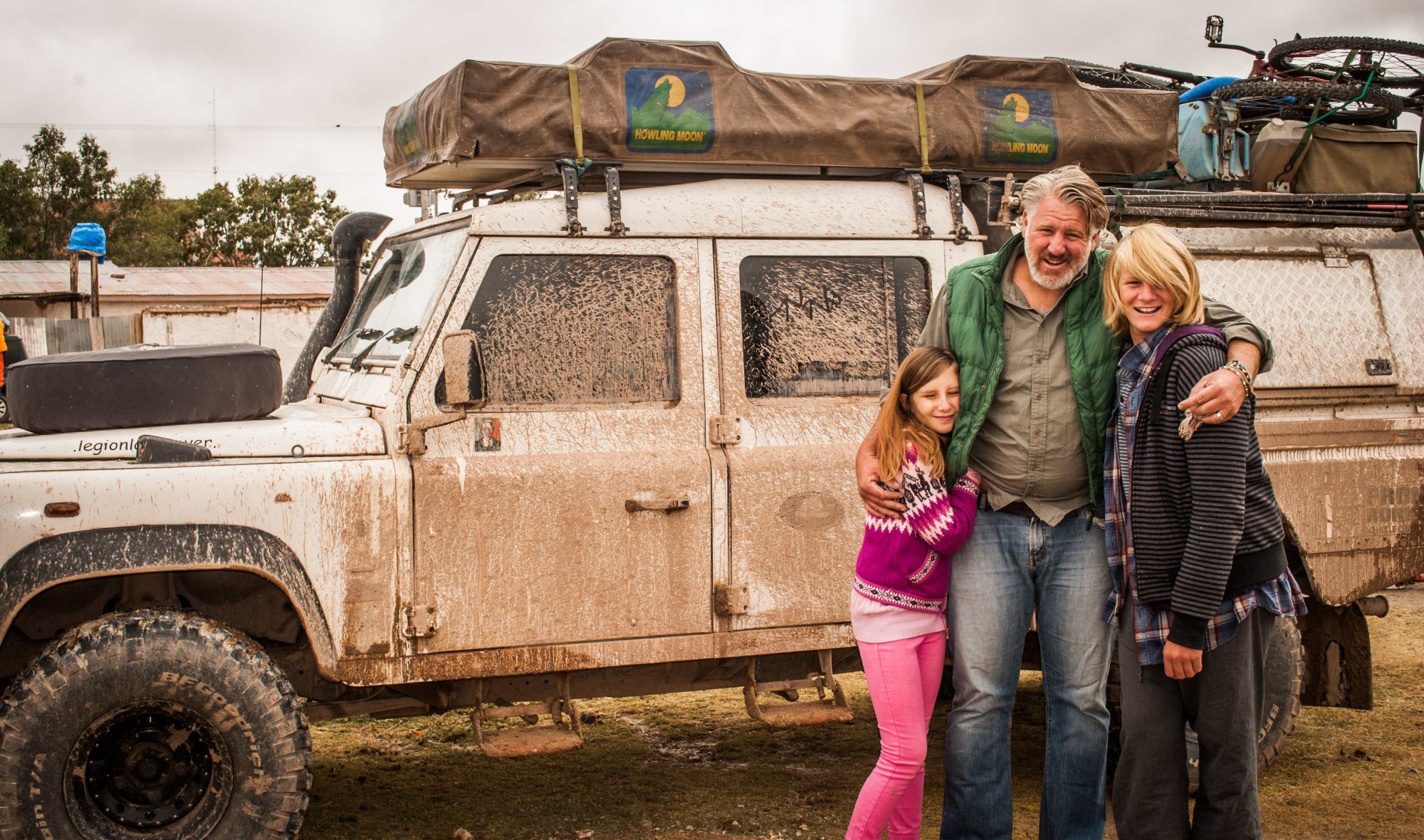As with vehicle maintenance, and most things in life, prevention is better than cure. You will need to practice the different driving techniques required for technically challenging surfaces if you intend to take your home on wheels off the black stuff. The rule is, “as fast as necessary and as slow as possible”. This is the mature off-road driving technique. Then there is the “peddle to the metal” technique favoured by the cowboy crowd, this technique involves tackling all obstacles with maximum power and, if stuck, spinning your wheels and swaying the steering wheel until the exhausted vehicle finds some traction and works its way out. Mechanical sensitivity is very important for an overlander who is driving his home, not a weekend toy. Destroying your clutch, CV and U Joints or overheating your engine in a remote off road situation is, in many cases, a recipe for disaster.
In this article we will focus on water crossing techniques and tips.
- Assess the water obstacle. Can you see the far bank? Are there tyre tracks entering and exiting the water? Is there an upside down weed strewn Toyota downstream? How fast is the water flowing and what material is most likely to be under the water, mud, stone or sand?
- When in doubt, walk it out. Never drive through suspect water without first sending the wife for a swim or getting your own feet wet. If you are lucky your significant other will be the designated Spotter and will volunteer to stumble around in the croc infested waters while you sip on a cold one ( preferably non-alcoholic),
- Walk the line of both the left and right tyres, you want to be sure that there are no invisible large holes or washouts,
- Be prepared to wait out a fast moving river, sometimes there has been rain upstream, perhaps far away, which temporarily swells the river. This also known as a flash flood. The water level may drop eventually, make a cup of tea and have some lunch, do not camp too close to the water’s edge, have a look around for an indication of a high water mark or flood level. Camping in a dry river bed can be dangerous if there is rain likely. A flash flood can be deadly and may destroy your vehicle,
- If having walked the water you are still in doubt wait for a local to come along. He will arrive in a beat up old vehicle full of very large women and drive across without batting an eye. You will feel pretty silly, don’t stress about it. If the local pulls up, shakes his head, makes a u turn and disappears back down the road, follow him. Find a place to camp or look for another route, one with a bridge perhaps,
- Let the engine cool before doing a deep water crossing, a hot engine will not react well to the sudden cooling effect of the water,
- Those with motorised transport must be aware of the height of the engines air intake. Diesel engines tend to cope much better with water than petrol engines. If you have a petrol engine, spray the points, coil, spark plugs and other electrical components in the engine bay with a good dose of WD40, Q20 or similar which will repel the water and prevent a stall half way through. If the vehicle stalls and you did not spray the components with the lubricant, now would be a good time to do it if the water is not too deep and the engine is not submerged. A raised air intake, or snorkel, permanently attached to the vehicle is a sound investment, not only for water crossings but also for raising the air intake away from the dust churned up by your wheels,
- If water enters the engine and the vehicle stalls DO NOT try and start the engine, you may destroy it, try and winch yourself out, bearing in mind that the battery may run dead without the engine running to power it,
- Enter deep water slowly, in low range second if possible, and increase your speed gradually until you create a bow wave with the vehicle. The vehicle will push the water forward and depressions will be created behind the wave which will decrease the resistance to the vehicle and prevent the water from entering the vehicle. Driving through water deeper than the top of your bonnet is unadvisable especially if the water is flowing swiftly,
- If you have no choice but to cross the fast flowing, deep water, perhaps an angry father or boyfriend is chasing you, take the time to attach the winch controller and spool out the winch cable and attach it to your roof rack. This way you will not have to go diving for your winch should you get stuck. Usually there are trees where there are rivers but not always. You might have to improvise a sand anchor,
- Give the vehicle a good run after a significant water crossing, the heat and movement will expel residual water and moisture from the engine, clutch and chassis. That moisture could cause problems with the electrical components the next morning,
- Cyclists, wait for a truck to give you a ride across or risk swimming it with your bike if you are stronger than the current. Holding onto a wet, heavy bike in a strong current is like oil wrestling an anaconda,
- Bikers should carry tools and knowledge to unflood the engine if water ingress occurs.
Below is a terrible video, shot by a slightly frantic wife in Northern Brazil in an area called the Lencois Maranhenses during our visit in the rainy season. We had chosen to take a track around the dunes to find a short cut to the next town instead of driving a large circular route on paved roads. What I love about this video is that it takes place in a rural, inhabited area and is an example of the kinds of “real world” water crossings and overlander might encounter. I also like the almost perfect bow wave created by the Land Rover. It is important to remember that we were travelling alone and while the water was not incredibly deep it is only one of the many water crossings we had to perform that day.
The above article is an excerpt from the book Travel The Planet Overland which is available for pre-order from www.a2aexpedition.com.






